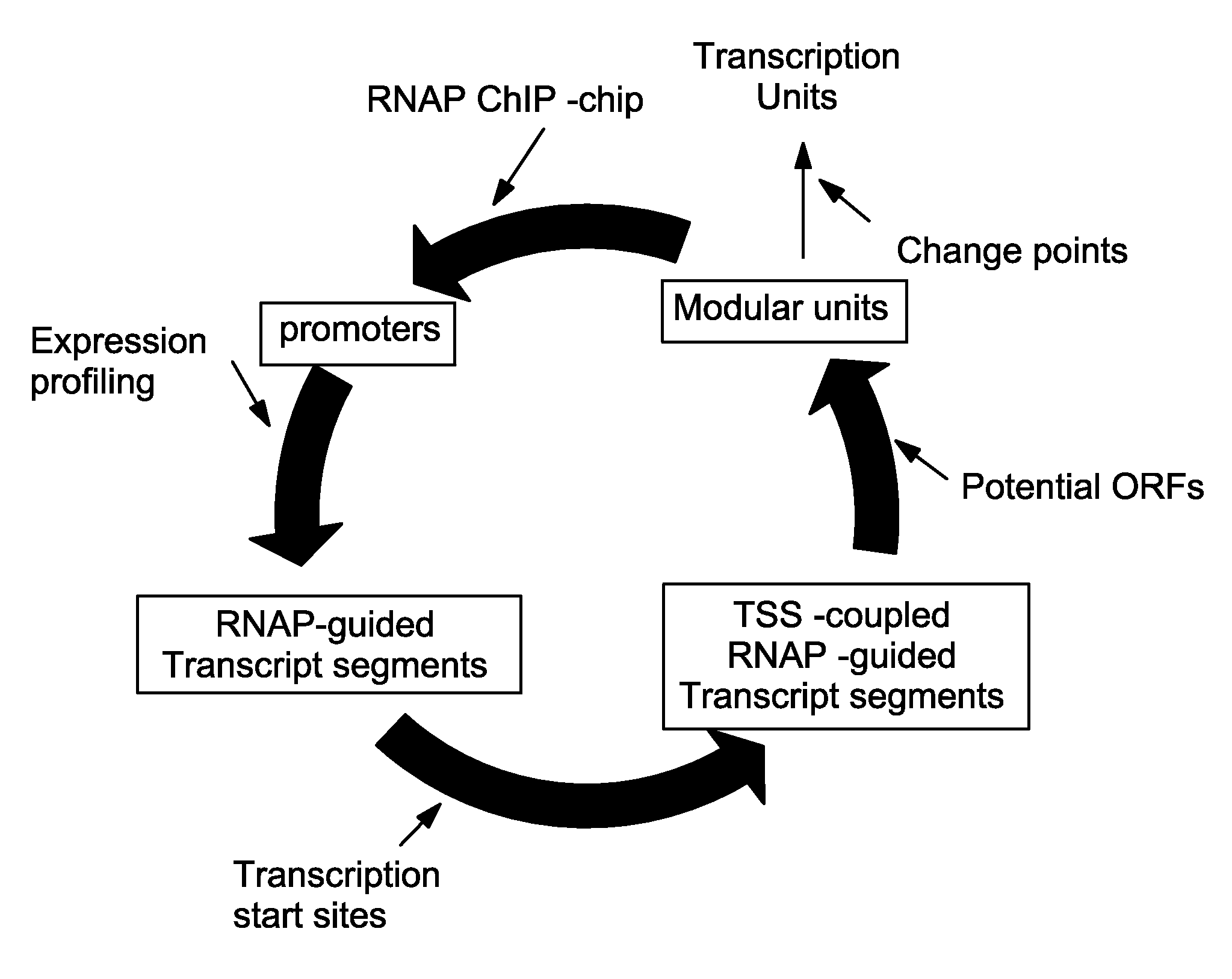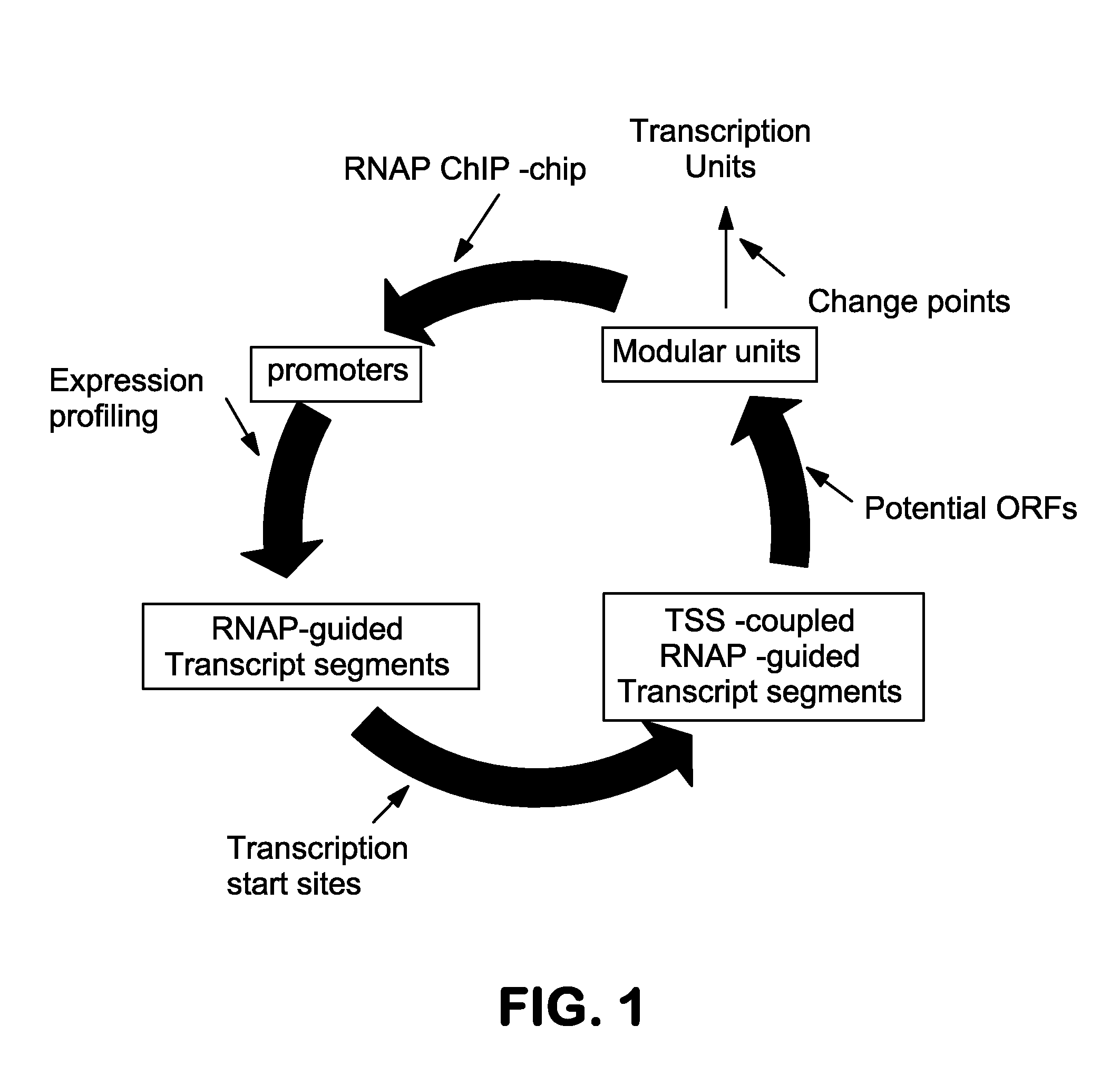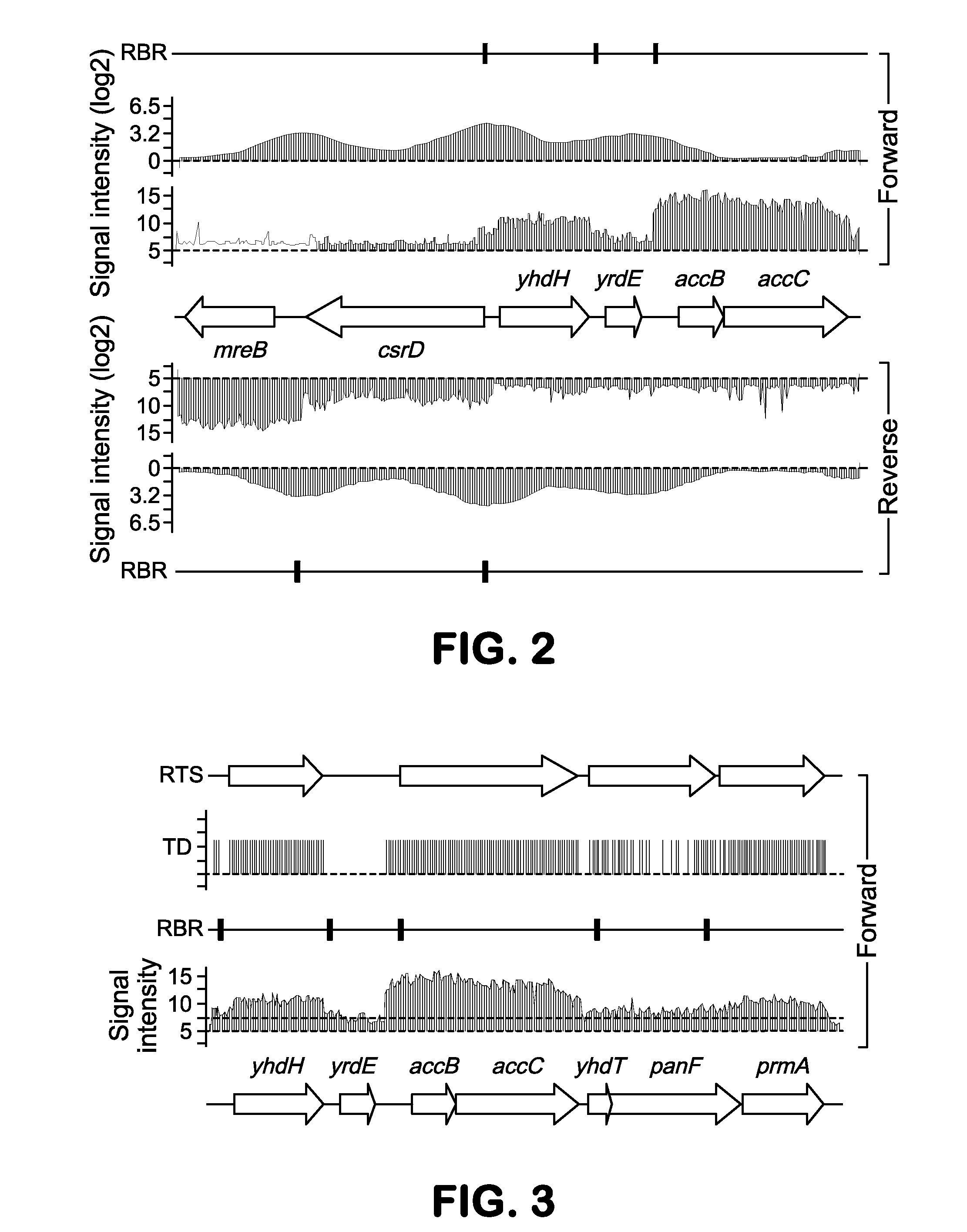Bacterial Metastructure and Methods of Use
a technology of bacterial genomes and metastructures, applied in the field of determining can solve the problems of difficult identification using sequence information alone, insufficiently elucidating the organizational structure of bacterial genomes based on such data, and a difficult task of establishing the organizational structure of a genom
- Summary
- Abstract
- Description
- Claims
- Application Information
AI Technical Summary
Benefits of technology
Problems solved by technology
Method used
Image
Examples
example 1
Metastructure Determination
[0088]This example demonstrates the detailed procedures used by describing how a specific situation is processed.
[0089]Strains and Media—E. coli MG1655 cells were harvested at mid-exponential phase (OD600 nm˜0.6) with exception of stationary phase experiments (OD600 nm˜1.5). Glycerol stocks of E. coli strains were inoculated into M9 complete or W2 minimal medium (for nitrogen-limiting condition) and cultured at 37° C. with constant agitation overnight. Cultures were diluted 1:100 into fresh minimal medium and then cultured at 37° C. to appropriate cell density. For heat-shocked experiments, cells were grown to mid-exponential phase at 37° C. and half of the culture was sampled for as a control. The remaining culture was transferred into pre-warmed (50° C.) medium and incubated for 10 min. For nitrogen-limiting condition, ammonium chloride in the minimal medium was replaced by glutamine (2 g / L). For rifampicin-treated cells, rifampicin dissolved in methanol...
example 2
Metastructure Determination if E. Coli K-12 MG1655
[0100]This example demonstrates data integration and analysis to determine the metastructure of the E. coli K-12 MG1655 genome.
[0101]Determination of RNA polymerase binding regions at a genome-scale—The first step is to establish a description of the flow of genetic information is its transfer into messenger RNA (mRNA) by the transcription process. Although this process is extensively regulated in response to external signals, mRNA is basically synthesized by RNA polymerase (RNAP) that initially binds to the promoter region. Therefore, RNAP-binding regions and mRNA transcript abundance were integrated to determine segments of contiguous transcription originating from promoter regions. To identify RNAP-binding regions at a genome scale, a ChIP-chip method was employed to E. coli K-12 MG1655 grown in the presence or absence of rifampicin under multiple growth conditions. Using an antibody specific to the RNAP β subunit, RNAP-associated...
PUM
 Login to View More
Login to View More Abstract
Description
Claims
Application Information
 Login to View More
Login to View More - R&D
- Intellectual Property
- Life Sciences
- Materials
- Tech Scout
- Unparalleled Data Quality
- Higher Quality Content
- 60% Fewer Hallucinations
Browse by: Latest US Patents, China's latest patents, Technical Efficacy Thesaurus, Application Domain, Technology Topic, Popular Technical Reports.
© 2025 PatSnap. All rights reserved.Legal|Privacy policy|Modern Slavery Act Transparency Statement|Sitemap|About US| Contact US: help@patsnap.com



